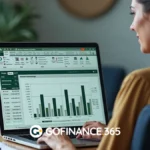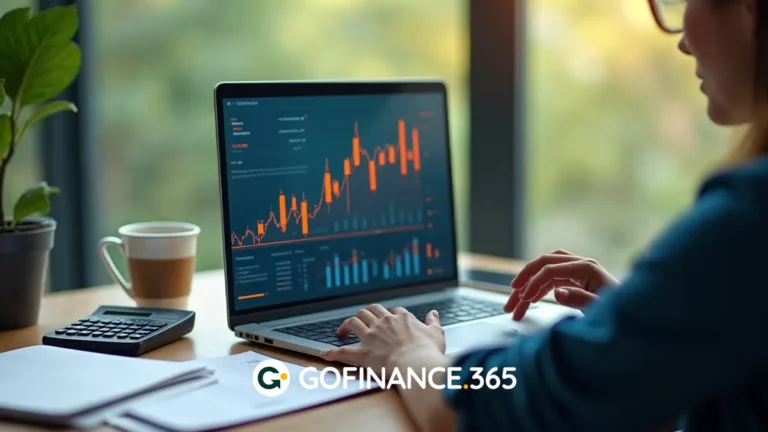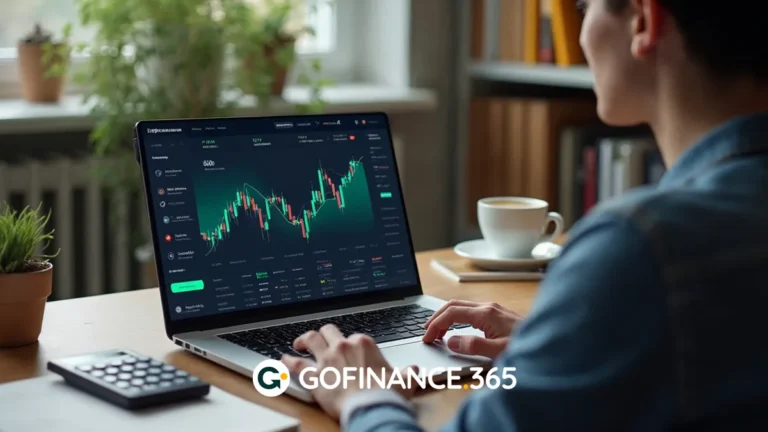Table of contents:
Have you ever reached the end of the month without understanding where your money went? The answer may lie in so-called ant expenses—tiny financial leaks that often go unnoticed but can have a big cumulative impact on your budget.
Daily coffees, unused subscriptions, impulse snack purchases… they’re so minor that we barely register them, but by the end of the month, they can add up to a significant sum. In this guide, we’ll show you how to identify these hidden expenses, how to avoid them using simple strategies, and the powerful benefits you’ll gain by eliminating them. I promise that with just a few adjustments to your routine, you can free up money and improve your financial health—without sacrificing your quality of life.
What are ant expenses?
Ant expenses are minor amounts of money we spend almost unconsciously in our daily lives. The problem is that they’re rarely included in our monthly budget—and so, they go unnoticed. A morning coffee, an afternoon snack, a bottle of water, a frequent tip, or an unused subscription might seem insignificant at the time, but collectively, they can become a major drain on your finances.
These types of expenses often lack a clear purpose and are not tied to actual needs. Most are driven by impulse, convenience, or unexamined habits. What makes them dangerous is their frequency. Because they don’t involve a single large payment, many people don’t question them or even notice them. Yet, by the end of the month—or the year—they can amount to hundreds or even thousands of dollars spent without a plan or clear benefit.
Ant, ghost, and vampire expenses: Are they the same thing?
No. While all represent financial leaks, they are not the same.
- Ant expenses: Small, frequent, almost invisible daily expenses. Examples: coffee, snacks, apps, tips.
- Ghost expenses: Charges you’re unaware of, such as automatic payments for forgotten subscriptions or duplicate insurance policies.
- Vampire expenses: Larger, more constant financial drains. Examples: an expensive gym membership you don’t use, or a service you could renegotiate.
Each type requires different strategies to detect and eliminate, so understanding the differences is essential for taking the right actions.
How to identify ant expenses in your daily life
Identifying ant expenses requires awareness and observation. The first step is breaking out of autopilot. Pay close attention to habits you perform without thinking—like buying coffee every morning, ordering takeout for convenience, or making impulse purchases while window shopping. These behaviors don’t feel like spending, but they are.
To uncover them, keep a daily spending log, check your bank statements, review debit or credit card activity, and look for recurring charges you can’t justify. If you find patterns, you’ve found hidden spending. A great practical exercise: write down every dollar you spend for one week and review it. You’ll be surprised by how much of it was unplanned.
Warning signs to detect invisible expenses
- Small daily purchases you don’t remember
- Frequent use of delivery, streaming, or ride-hailing apps
- Automatic payments for services you rarely or never use
- A recurring feeling of “I don’t know where my money went”
If any of these apply to you, small expenses are likely doing more damage than you realize.
How do ant expenses affect your financial health?
Ant expenses can significantly undermine your financial health over time. They eat away at your ability to save, increase your risk of falling into debt, and slow your progress toward financial goals. Because they’re subtle and “invisible,” they can also cause frustration—it’s hard to fix what you can’t see.
They often create a false sense of control: “It’s only two dollars, it’s no big deal.” But two dollars a day can become over sixty by month’s end. This self-deception is precisely what makes these expenses so harmful.
Examples of ant expenses you should avoid
Ant expenses are everywhere. Some are so ingrained in your routine that you no longer recognize them as spending. Others appear to be harmless rewards, when in fact they’re unplanned, impulsive purchases. Here are some of the most common ones:
- Buying food or drinks out of habit instead of planning ahead
- Impulse buys in stores or online
- Unused automatic subscriptions
- Bank fees for maintenance, transfers, or withdrawals
- Unnecessary transportation costs (ride-hailing apps when you could walk)
Avoiding these doesn’t mean living in extreme frugality—it simply means being more conscious about where your money goes.
Ant expenses in daily food (Coffee, snacks, delivery)
Just one coffee per day can total over €60 per month. Add in fast food, sodas, or unplanned snacks, and you might be spending as much as an entire week’s worth of groceries. The solution? Plan your meals and bring from home what you’d otherwise buy outside.
Small impulse purchases and everyday cravings
A pen, a cute notebook, a tiny plant… you buy them because they’re “cheap” and “harmless.” But they add up. Before buying, ask yourself: Do I need this? Could I live without it? Is this just a fleeting desire?
Entertainment apps and unnecessary subscriptions
Do you have multiple streaming platforms? How many do you actually use? If you’re paying for four but only use two, you’re throwing money away. Review your subscriptions monthly. Cancel what you don’t need.
Bank fees and hidden charges
Maintenance fees, ATM charges, wire transfer fees… they’re silent, but they add up. Ask your bank about no-fee options or switch to a bank that doesn’t charge for basic services. You could be paying for things you can easily get for free.
Daily transportation and related expenses
Uber, Cabify, taxis, parking fees—if you rely on these for convenience or habit, you might be overspending. Consider using public transportation or walking when possible. In the long run, your wallet will thank you.
How to effectively avoid and control ant expenses
The key to controlling ant expenses lies in awareness and planning. You don’t have to eliminate every little pleasure—but you do need to take charge of your spending habits. The idea is to recognize patterns, set clear limits, and look for smarter alternatives.
One useful technique is the “wait 24 hours” rule: if you feel the urge to make a small impulse purchase, wait a full day. If, after that time, you still genuinely want or need it, go ahead. If not, chances are it wasn’t worth it in the first place.
Set a realistic monthly budget
Create a budget that accounts for all your expenses—including the small ones. Allocate a specific amount for “treats” or “miscellaneous spending.” If you exceed that amount, it’s a sign you’re falling into the trap of small expenses.
This kind of budgeting allows you to enjoy without guilt—but with boundaries and control.
Review your finances regularly
Do a weekly or biweekly review of your finances. It doesn’t need to be a full financial audit—just take a few minutes to see where your money has gone. This habit will help you make timely adjustments before your spending gets out of control.
Use digital tools to manage your finances
Finance apps can help you track and categorize expenses, offering clear visual summaries of your spending. Some apps even send alerts when you’re nearing your limits. These tools are especially helpful if you’re just beginning your journey toward better financial awareness.
Ant expenses in companies and businesses: The most common ones
Businesses—especially small or growing ones—also suffer from the weight of small expenses. Just like with personal finances, these costs often go unnoticed but can impact the bottom line over time.
Common examples include:
- Uncontrolled use of office supplies
- Excessive electricity or water usage
- Unrecorded costs for team coffee breaks or lunches
- Duplicate software licenses or underused digital tools
A monthly audit, even an informal one, can help identify these leaks. Cutting down on them can improve your profit margins without needing to reduce staff or make large capital investments.
Benefits of eliminating ant expenses from your budget
Eliminating ant expenses gives you back control of your finances. It allows you to save more—without making painful sacrifices. And those small savings can quickly evolve into investments, peace of mind, or greater financial independence.
It also strengthens your relationship with money. Instead of constantly wondering where your money has gone, you begin to actively choose what’s worth spending on. That sense of control reduces stress and increases your ability to plan effectively for the future.
Increase your savings capacity
Reclaiming just a few dollars each day can add up quickly—by the end of the month, you could have saved $50, $100, or even more. That money can go directly into your emergency fund, help pay off debt, or bring you closer to reaching bigger financial goals.
Reduce financial stress
Knowing exactly where your money is going brings peace of mind. Avoiding unpleasant surprises at the end of the month—and no longer feeling like your money is “disappearing”—has a positive effect on both your mental and emotional well-being.
Reach your financial goals faster
When you stop wasting money on unimportant things, you free up those funds to focus on what truly matters: buying a home, investing, traveling, or pursuing education. Eliminating small expenses accelerates your journey toward meaningful goals.
Recognize and control the small expenses in your finances
Identifying and eliminating ant expenses is a simple yet powerful way to save money and strengthen your finances—without needing to make extreme sacrifices. It’s not about living rigidly, but about being aware, intentional, and responsible.
Try it for one week: write down every small expense you make. You’ll likely be surprised. Then take action—make changes and adjust your habits. That’s how transformation begins.
Because in the end, financial freedom is built one detail at a time.















